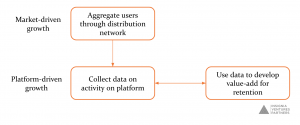At the start of this year, we published a piece about how tech startups in Southeast Asia are taking on a distribution-first approach to digitalize the region’s rural economy, projected to double in GTV over the next five years.
As the essay discussed, counterintuitive to how startups have normally progressed from product market fit to distribution, establishing a strong distribution network in an environment with relatively low internet and digital native activity enables faster adoption of digital products and services. This distribution network is cost-effective because it involves resources and infrastructure already functioning in the community. Technology then serves to boost the capabilities of these people or infrastructure.
This essay continues where the last one left off, this time moving past distribution into the question of growth in the rural economy. This wave of startups tackling the rural economy have been targeting basic services and industry-specific problems, sustainable growth goes well beyond capturing users. And as recent events strain traditional supply chains, the race to bridge the gap to better products and services to the rural economy is becoming more important than ever before.
Got 99 problems, data ain’t one
While the distribution-first approach is a cost-effective way to drive tech adoption, simply aggregating this network on a tech platform won’t be enough to retain either supply or demand. For a tech platform in general, the ideal strategy would be to venture into new use cases and value-add services for users, capturing as much lifetime value as possible from every user acquired.
The rural economy presents a number of challenges to this approach. First is the vast amount of inefficiencies in supply chains and processes that present a variety of entry points for a startup. Second is the high cost of initial CAC and building the distribution network, which means startups will be hard-pressed to spare more cash to enter into other revenue streams or other use cases. Third is the unpredictability inherent in a lot of these markets.
Overcoming these challenges begins with revisiting the distribution network and looking at it not just as a distribution network but as a reservoir of data. Depending on the kind of data the network generates via transactions on the platform, the entry point into adjacencies and prioritization of value-add services becomes clearer. This reduces the risk and cost of growth.
We’ve seen this data-driven approach to growth among some of our portfolio companies working in financial services, logistics, and agriculture:
Meanwhile, Indonesian SME financing startup AwanTunai began with financing, digitizing supply chain transaction data to underwrite inventory financing loans for micromerchants. This allows them to tap into Indonesia’s offline FMCG retail sales and bring in trusted financial institutions into the picture.
Back in Vietnam, LOGIVAN tapped into truck, route, and driving behavior data generated by matching truckers and shippers on their platform to power an instant pricing model for the next-day deliveries of shippers. This is strengthening retention not just with shippers, but also the truckers, who are able to receive personalized pricing offers.
When it comes to agritech Sayurbox‘s farm-to-table approach in Indonesia, data IS what retains consumers. They’ve found that consumers value visibility on their items, and so they inform customers where their produce comes from. From farmers, they utilize data coming out of sourcing hubs across the country to manage the flow of stock and reduce wastage along the supply chain. Reducing this wastage strengthens farmer retention, as farmers ultimately want to be able to sell as much of their crop as possible.
From market-driven growth to platform-driven growth
Throughout our discussion of the rural economy, it’s been common to cite technology as enabling the rural economy. When it comes to growth however, it’s the communities and users enabling the technology to develop further.
This ties back to the distribution-driven approach to retention. If we scale this process of using data to beef up the value of the platform, it becomes clear that from a broader perspective the direction of the platform’s growth in capability is driven by the user activity. This not only builds retention, but more importantly, loyalty and trust. This self-sustaining cycle is particularly important to growth in the rural economy, where the costs can run high to introduce new services or tackle a new geography.

a framework for growth in the rural economy
Because of the potential to build such a cycle, many startups addressing the needs of the rural economy are less focused on growth across the region as they are with growth around their core distribution. By focusing on core users and relationships between supply and demand, these startups are able to go beyond market-driven growth and develop a platform that can drive growth on its own. This makes their business models more resilient and enduring.
Paulo Joquiño is a writer and content producer for tech companies, and co-author of the book Navigating ASEANnovation. He is currently Editor of Insignia Business Review, the official publication of Insignia Ventures Partners, and senior content strategist for the venture capital firm, where he started right after graduation. As a university student, he took up multiple work opportunities in content and marketing for startups in Asia. These included interning as an associate at G3 Partners, a Seoul-based marketing agency for tech startups, running tech community engagements at coworking space and business community, ASPACE Philippines, and interning at workspace marketplace FlySpaces. He graduated with a BS Management Engineering at Ateneo de Manila University in 2019.